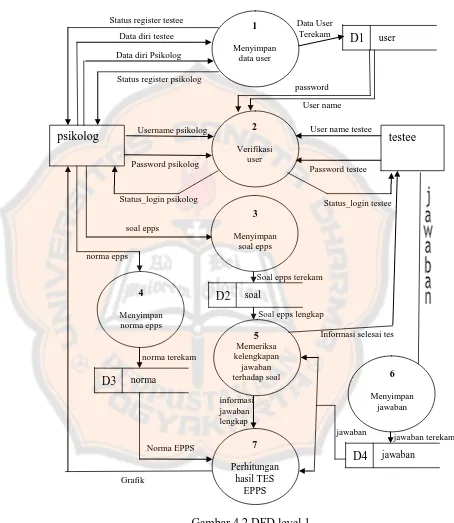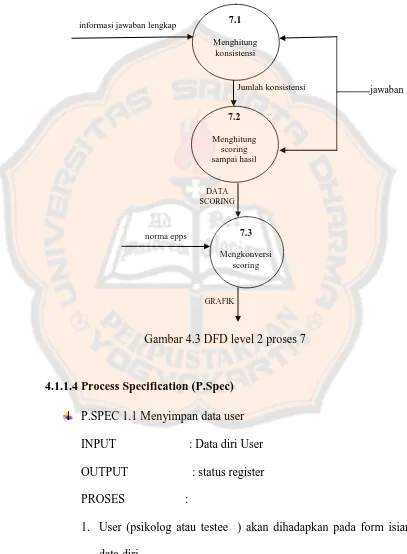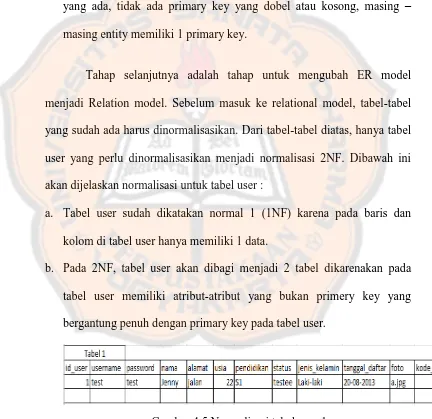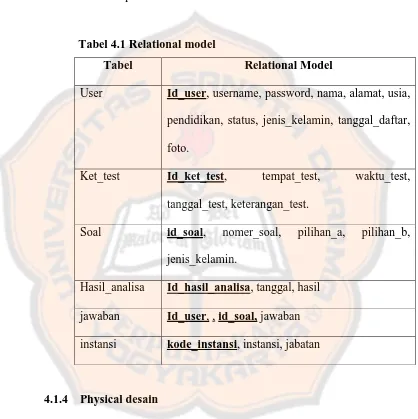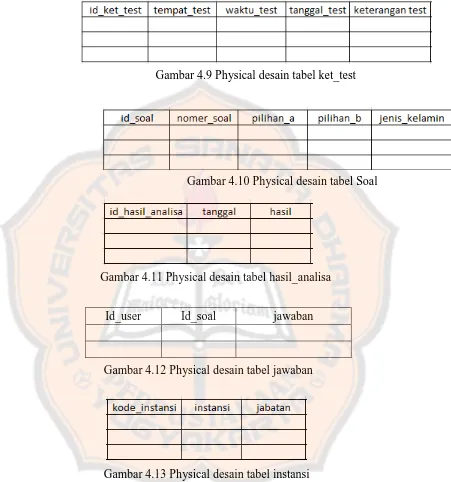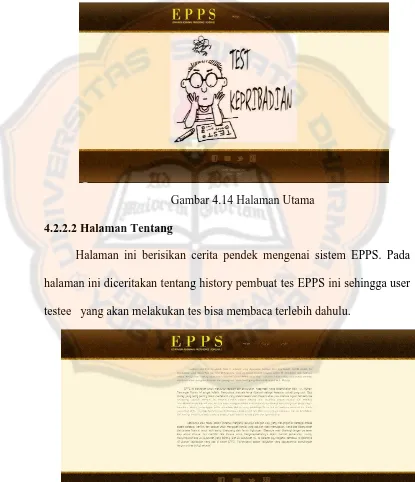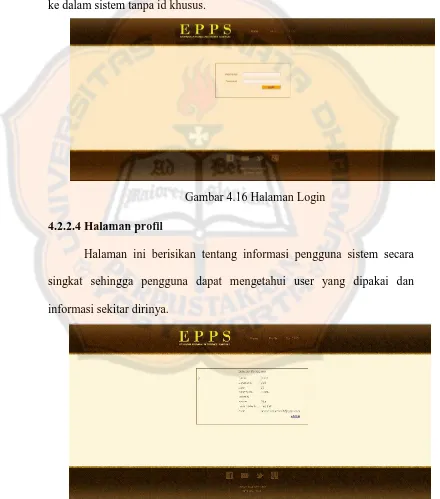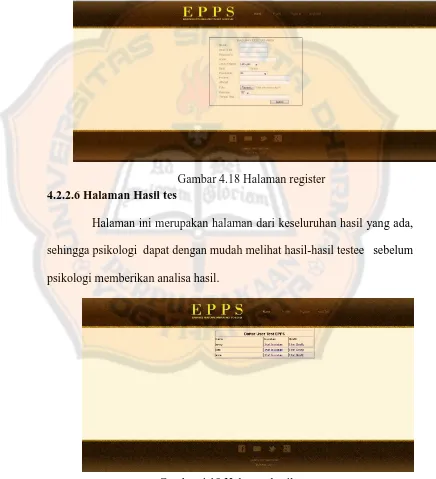Informasi Dokumen
- Penulis:
- Jenny Dwi Hartono
- Pengajar:
- Bapak Drs. Johanes Eka Priyatma, M.Sc., Ph.D.
- Bapak Carolus Wijoyo Adi Nugroho, M.Psi., Psi.
- Bapak JB. Budi Darmawan, S.T.,M.Sc.
- Ibu Paulina H. Prima Rosa, S.Si., M.Sc.
- Ibu Ridowati Gunawan S.kom., M.T.
- Ibu Sri Hartati Wijono S.Si., M.Kom.
- Sekolah: Universitas Sanata Dharma
- Mata Pelajaran: Teknik Informatika
- Topik: Pengujian Usability Sistem Tes Psikologi Edwards Personal Preference Schedule Universitas Sanata Dharma
- Tipe: skripsi
- Tahun: 2014
- Kota: Yogyakarta
Ringkasan Dokumen
I. Introduction
This section outlines the background of the study, emphasizing the increasing relevance of computer-aided testing in psychology. It discusses the evolution of computer use from mere calculation tools to integral components in various fields, particularly in education and psychology. The introduction presents the Edwards Personal Preference Schedule (EPPS) as a suitable candidate for computerization due to its objective nature and the potential benefits it brings in terms of efficiency and accuracy in psychological assessments.
II. Theoretical Foundations
This section provides a comprehensive overview of the theoretical frameworks guiding the research. It covers Computer Aided Testing (CAT), detailing its history, definitions, advantages, and disadvantages. The EPPS is introduced, explaining its historical context, definitions, strengths, and weaknesses. The concept of usability is defined, highlighting its importance in the development and evaluation of user interfaces, particularly in educational applications. Key aspects of usability are discussed, which will serve as the basis for the research methodology.
2.1 Computer Aided Testing (CAT)
This subsection traces the history and development of CAT, emphasizing its role in enhancing the efficiency and standardization of testing processes. It discusses the advantages, such as cost-effectiveness and improved data analysis, alongside the initial costs and training requirements.
2.2 Edwards Personal Preference Schedule (EPPS)
This subsection delves into the EPPS, detailing its purpose in assessing personality traits based on H.A. Murray's need theory. It outlines the 15 personality variables measured by the EPPS and their significance in psychological evaluations.
2.3 Usability
This subsection defines usability within the context of software applications, emphasizing its role in user satisfaction and effectiveness. It discusses the importance of usability analysis in the development phase to enhance user experience and system performance.
III. Research Methodology
This section outlines the research design, including the data collection methods and the development of the EPPS testing system. It describes the stages of system development, questionnaire creation, and usability testing. The methodology emphasizes a systematic approach to ensure the reliability and validity of the data collected from respondents.
3.1 Data Collection Methods
This subsection details the methods used for data collection, including the development of the EPPS system using PHP and MySQL, and the creation of usability questionnaires based on established usability aspects.
3.2 Usability Testing
This subsection explains the usability testing process, which involves obtaining feedback from users through questionnaires, assessing their experiences with the EPPS system, and analyzing the results to determine usability scores.
IV. System Design and Implementation
This section describes the design and implementation of the EPPS testing system. It includes the development of data flow diagrams (DFD) that outline the system's processes, user interactions, and data management strategies. The design emphasizes an interactive user interface to enhance user engagement and satisfaction.
4.1 System Design
This subsection presents the overall system architecture and design principles, focusing on user interface design and user experience considerations. It includes DFDs that illustrate the flow of data and the interactions between users and the system.
4.2 Implementation
This subsection discusses the technical implementation of the EPPS system, detailing the programming languages and database technologies utilized. It highlights the importance of creating a user-friendly interface to facilitate ease of use.
V. Results and Discussion
This section presents the findings from the usability testing of the EPPS system. It includes statistical analysis of the data collected from the questionnaires, interpreting the usability scores and comparing them against established benchmarks. The discussion emphasizes the implications of the results for the field of psychology and educational technology.
5.1 Data Analysis
This subsection details the analytical methods used to interpret the data from the usability questionnaires, including calculations of average scores and standard deviations to assess user satisfaction and system effectiveness.
5.2 Usability Scores
This subsection presents the usability scores obtained from the testing, categorizing them into different ranges to evaluate the overall performance of the EPPS system. It discusses the significance of these scores in the context of psychological testing.
VI. Conclusion and Recommendations
This final section summarizes the key findings of the research, reiterating the importance of usability in the development of psychological testing systems. It offers recommendations for future research and improvements to the EPPS system, aiming to enhance its usability and applicability in educational and psychological contexts.
6.1 Conclusion
This subsection encapsulates the main conclusions drawn from the research, emphasizing the successful implementation and usability of the EPPS system in psychological assessments.
6.2 Recommendations
This subsection provides actionable recommendations for future enhancements of the EPPS system, including suggestions for further usability testing and potential integrations with other psychological assessment tools.
Referensi Dokumen
- Tes Psikologi ( Anastasia, A & Urbina, S. )
- Prosedure penelitian ( Arikunto, S. )
- Edwards Personal Preference Schedule (E.P.P.S.) ( Edwards, Allen L. )
- A Usability and Accessibility Oriented Development Process ( Gonzalez P, Lozano MD, dan Montero F. )
- Aplikasi Web Dengan PHP dan MySQL ( Peranginan, K. )

